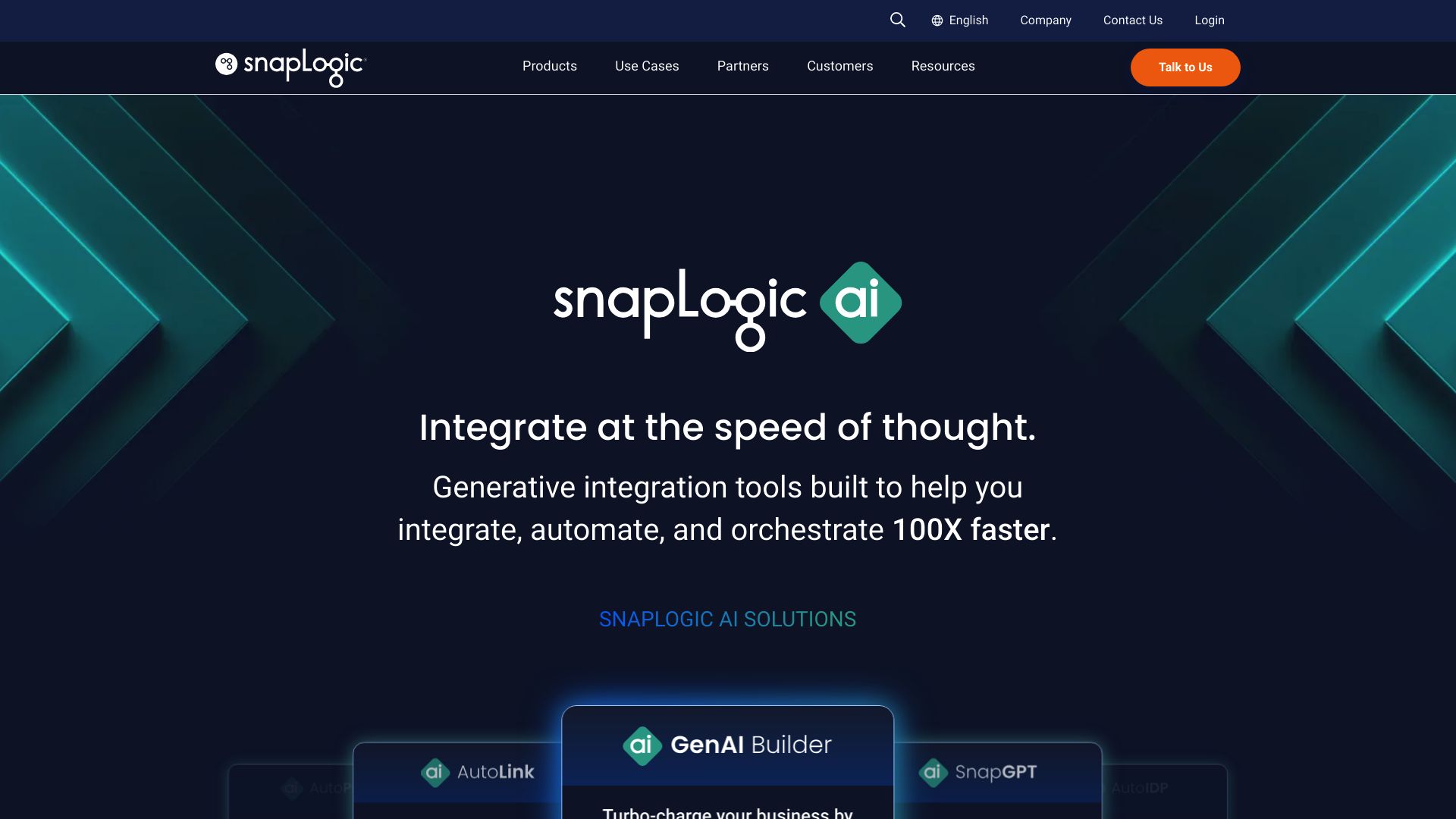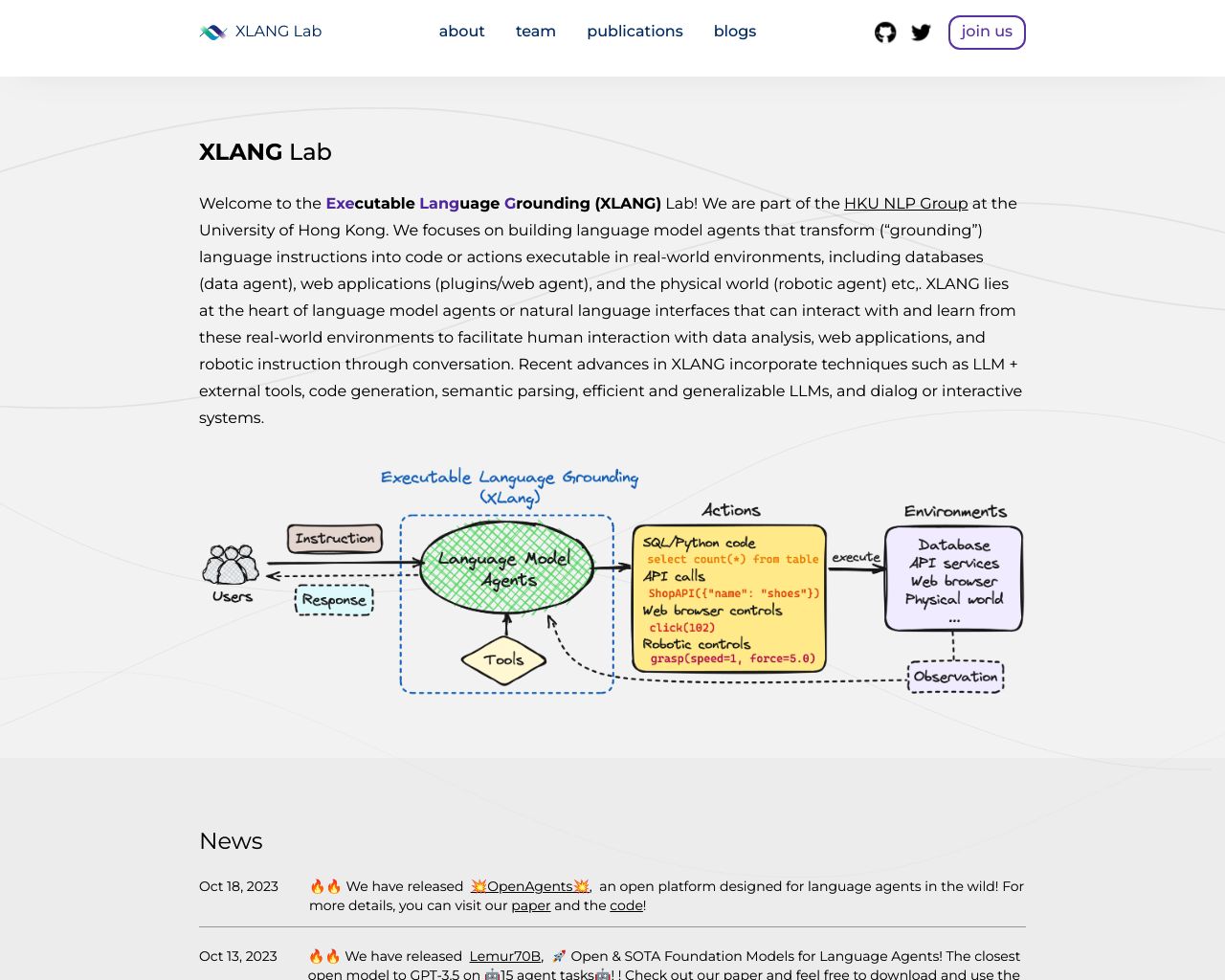snapLogic AI vs. OpenAgents: Comparing AI Automation Platforms
AI-powered automation and integration platforms are transforming how businesses operate, analyze data, and interact with technology. This comparison explores three leading solutions: snapLogic AI vs. OpenAgents, and SmythOS. snapLogic AI offers a visual interface for building data pipelines and AI-driven workflows, catering to both technical experts and citizen integrators. OpenAgents provides specialized AI agents for data analysis, web browsing, and plugin integration, focusing on accessibility for everyday users. SmythOS emerges as a comprehensive AI agent ecosystem, combining advanced features like constrained alignment and multi-agent collaboration with unparalleled deployment flexibility. This review delves into each platform’s strengths, use cases, and how they address the evolving needs of businesses seeking to leverage AI for improved efficiency and innovation.
snapLogic AI Overview
snapLogic AI provides an Intelligent Integration Platform leveraging AI to automate data integration tasks across cloud, on-premises, and hybrid environments. The platform caters to both technical experts and citizen integrators, offering a visual interface for building data pipelines without extensive coding.


SnapLogic’s platform shines in its AI-powered capabilities, particularly with features like SnapGPT and GenAI Builder. These tools enable no-code development of AI applications, allowing users to create models and chatbots using natural language prompts. This approach democratizes AI development, making it accessible to a broader range of users within organizations.
SnapLogic’s platform shines in its AI-powered capabilities… These tools enable no-code development of AI applications, allowing users to create models and chatbots using natural language prompts.
The platform’s core strength lies in its comprehensive integration support. It handles various data types and sources, from structured to unstructured, batch to real-time streaming data. SnapLogic uses “Snaps” — pre-built connectors that simplify the connection of SaaS and on-premises applications. This feature significantly reduces the complexity of integration projects, enabling faster deployment and reducing the technical overhead for users.
SnapLogic’s scalability sets it apart in the integration platform landscape. By leveraging Amazon’s Elastic Compute Cloud infrastructure, the platform can scale integration processes dynamically based on enterprise needs. This elasticity optimizes computing power consumption and data proximity, crucial for organizations dealing with fluctuating workloads or expanding data integration requirements.
However, potential users should consider that while SnapLogic offers powerful AI-driven capabilities, it may require a learning curve to fully utilize its features. Additionally, as with many comprehensive platforms, the cost structure could be a consideration for smaller organizations or those with limited integration needs.
OpenAgents Overview
OpenAgents introduces an innovative open-source platform for creating, hosting, and managing AI agents. The platform centers around three specialized agents: Data Agent, Plugins Agent, and Web Agent, each designed to tackle specific tasks efficiently.


The Data Agent excels in complex data analysis, simplifying tasks like searching, manipulating, and visualizing large datasets. This capability proves particularly valuable for marketing professionals and data analysts who require quick insights from extensive information.
OpenAgents’ standout feature is the Plugins Agent, boasting over 200 integrated plugins. This versatile agent handles a wide array of daily tasks, from weather checks to online shopping and scientific data access. The sheer diversity of plugins makes it adaptable to various user needs, enhancing productivity across different domains.
OpenAgents’ standout feature is the Plugins Agent, boasting over 200 integrated plugins. This versatile agent handles a wide array of daily tasks, from weather checks to online shopping and scientific data access.
The Web Agent, equipped with a Chrome extension, revolutionizes web browsing by automating navigation and exploration. This feature streamlines information gathering and resource access, making it an invaluable tool for researchers and content curators.
OpenAgents emphasizes user-friendliness with its web UI and backend server, enabling smooth communication with the agents. This accessibility extends the platform’s utility to non-expert users, democratizing AI technology. However, the open-source nature of OpenAgents may present challenges in terms of support and maintenance for users less familiar with managing such systems.
The platform’s vision centers on integrating language agents into daily life, bridging the gap between expert and non-expert users. By focusing on practical, real-world applications, OpenAgents aims to make AI more accessible and useful in everyday contexts. This approach positions OpenAgents as a powerful tool for both individual users and businesses looking to leverage AI for improved efficiency and innovation.
Feature Comparison
snapLogic AI and OpenAgents offer distinct approaches to AI integration and automation, with notable differences in their core components and security features. snapLogic AI excels in data integration, providing a comprehensive platform for connecting various data sources and applications. Its visual interface simplifies complex integration tasks, making it accessible to both technical and non-technical users. In contrast, OpenAgents focuses on specialized AI agents for specific tasks like data analysis, web browsing, and plugin integration.
Security-wise, snapLogic AI demonstrates robust features, including data encryption, OAuth support, and IP control. These capabilities ensure secure data handling and access management, critical for enterprise-level deployments. OpenAgents, being open-source, may require additional configuration for similar security levels. While both platforms support AI integration, snapLogic AI’s foundation AI models and extensive API connections offer broader integration possibilities compared to OpenAgents’ more specialized agent approach.
SmythOS stands out in this comparison with its comprehensive AI agent ecosystem. It offers advanced features like constrained alignment, ensuring AI behavior aligns with organizational goals, and a sophisticated agent work scheduler for automated task management. SmythOS also provides superior scalability and deployment options, including API, webhook, and GPT integrations, surpassing both snapLogic AI and OpenAgents in versatility and enterprise-readiness.
Feature Comparison Table
| snapLogic AI | OpenAgents | SmythOS | |
|---|---|---|---|
| CORE FEATURES | |||
| Visual Builder | ✅ | ❌ | ✅ |
| No-Code Options | ✅ | ❌ | ✅ |
| Memory & Context | ❌ | ✅ | ✅ |
| Agent Work Scheduler | ✅ | ❌ | ✅ |
| SECURITY | |||
| Constrained Alignment | ✅ | ❌ | ✅ |
| IP Control | ✅ | ❌ | ✅ |
| COMPONENTS | |||
| Foundation AIs | ❌ | ✅ | ✅ |
| Huggingface AIs | ❌ | ✅ | ✅ |
| Zapier APIs | ❌ | ✅ | ✅ |
| Classifiers | ❌ | ✅ | ✅ |
| Data Lakes | ✅ | ❌ | ✅ |
| DEPLOYMENT OPTIONS (EMBODIMENTS) | |||
| Staging Domains | ❌ | ❌ | ✅ |
| Production Domains | ❌ | ❌ | ✅ |
| Deploy as Site Chat | ❌ | ✅ | ✅ |
| Deploy as Scheduled Agent | ✅ | ❌ | ✅ |
| Deploy as GPT | ❌ | ✅ | ✅ |
| DATA LAKE SUPPORT | |||
| Hosted Vector Database | ❌ | ❌ | ✅ |
| Sitemap Crawler | ❌ | ❌ | ✅ |
| YouTube Transcript Crawler | ❌ | ❌ | ✅ |
| URL Crawler | ❌ | ✅ | ✅ |
Best Alternative to snapLogic AI and OpenAgents
SmythOS emerges as the superior alternative to snapLogic AI and OpenAgents, offering a comprehensive AI agent ecosystem that surpasses both in versatility and enterprise-readiness. Our platform excels in creating and deploying AI agents with unmatched ease and efficiency.
We provide a robust drag-and-drop interface, making complex AI workflows accessible to users of all technical backgrounds. This visual builder, coupled with our no-code options, democratizes AI development, allowing teams to innovate without extensive programming knowledge.
SmythOS emerges as the superior alternative to snapLogic AI and OpenAgents, offering a comprehensive AI agent ecosystem that surpasses both in versatility and enterprise-readiness.
Our platform’s feature set outshines competitors. We offer advanced capabilities like constrained alignment, ensuring AI behavior aligns with organizational goals, and a sophisticated agent work scheduler for automated task management. These features, absent in snapLogic AI and OpenAgents, provide unparalleled control and efficiency in AI operations.
SmythOS boasts superior scalability and deployment options. We support API, webhook, and GPT integrations, along with site chat and scheduled agent deployments. This flexibility allows seamless integration into existing systems and workflows, addressing a wider range of use cases than our competitors.
Security is paramount in SmythOS. We implement robust data encryption, OAuth support, and IP control, ensuring your AI agents operate in a secure environment. This comprehensive security approach makes us the ideal choice for enterprises requiring stringent data protection measures.
Conclusion
SnapLogic AI, OpenAgents, and SmythOS each offer unique approaches to AI integration and automation, catering to diverse user needs. SnapLogic AI excels in data integration with its visual interface and AI-powered workflows, making it accessible to both technical and non-technical users. OpenAgents stands out with its specialized AI agents for data analysis, web browsing, and plugin integration, offering a user-friendly platform for everyday tasks.
However, SmythOS emerges as the superior choice, combining the strengths of both platforms while offering additional advanced features. Our drag-and-drop interface surpasses SnapLogic’s visual tools, allowing for even more intuitive AI workflow creation. Unlike OpenAgents’ limited agent types, we provide a comprehensive ecosystem for creating and deploying AI agents across various platforms and services.
SmythOS’s standout features include constrained alignment for secure AI behavior, an advanced agent work scheduler, and superior scalability options. We offer unparalleled deployment flexibility, allowing users to integrate AI solutions seamlessly into existing systems as APIs, webhooks, chatbots, or scheduled agents. Our platform’s ability to handle complex multi-agent collaborations and support for a vast array of AI models and integrations puts it ahead of both SnapLogic AI and OpenAgents in versatility and enterprise-readiness.
For those looking to harness the full potential of AI in their workflows, we invite you to explore our diverse range of AI-powered agent templates and experience unlimited AI automation risk-free. With SmythOS, you’ll unlock a new level of efficiency and innovation in your AI journey.
Last updated:
Disclaimer: The information presented in this article is for general informational purposes only and is provided as is. While we strive to keep the content up-to-date and accurate, we make no representations or warranties of any kind, express or implied, about the completeness, accuracy, reliability, suitability, or availability of the information contained in this article.
Any reliance you place on such information is strictly at your own risk. We reserve the right to make additions, deletions, or modifications to the contents of this article at any time without prior notice.
In no event will we be liable for any loss or damage including without limitation, indirect or consequential loss or damage, or any loss or damage whatsoever arising from loss of data, profits, or any other loss not specified herein arising out of, or in connection with, the use of this article.
Despite our best efforts, this article may contain oversights, errors, or omissions. If you notice any inaccuracies or have concerns about the content, please report them through our content feedback form. Your input helps us maintain the quality and reliability of our information.
